Chiffon cake is my “Asian mom-approved” cake—light, fluffy, and gently sweet. No sugar overload here, just the perfect slice that vanishes even faster with a dollop of whipped cream.
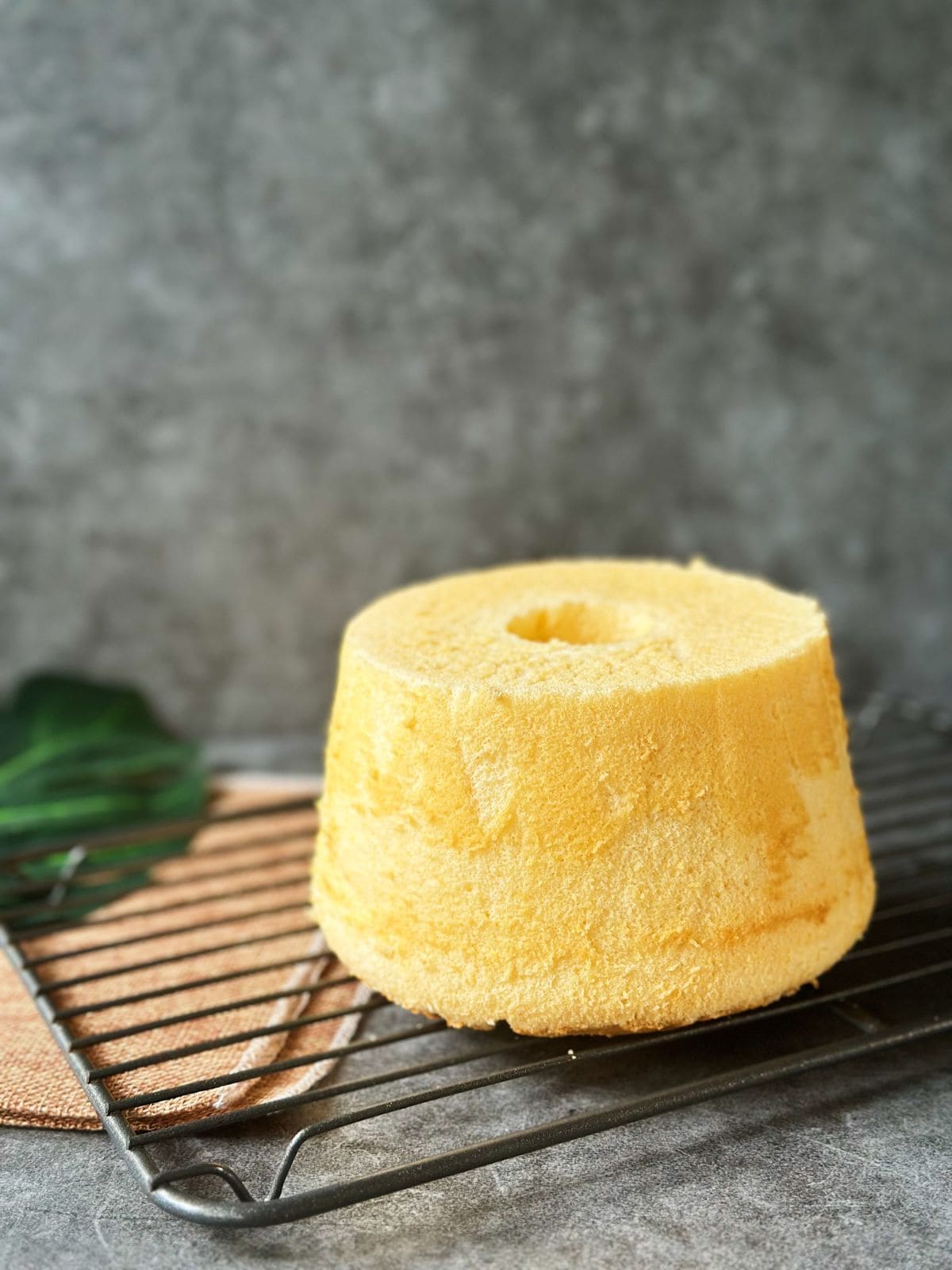
What’s the deal with Asian chiffon cakes?
If you’re in a hurry and just want to get cooking, feel free to jump into the recipe card.
If you’ve ever wandered into an Japanese / Chinese bakery or fallen down the rabbit hole of Asian patisserie, you’ll notice one thing right away: everything’s light, fluffy, and not overly sweet.
These cakes are whipped egg-based, melt-in-your-mouth soft, and if there’s any cream involved, it’s usually light as a feather.
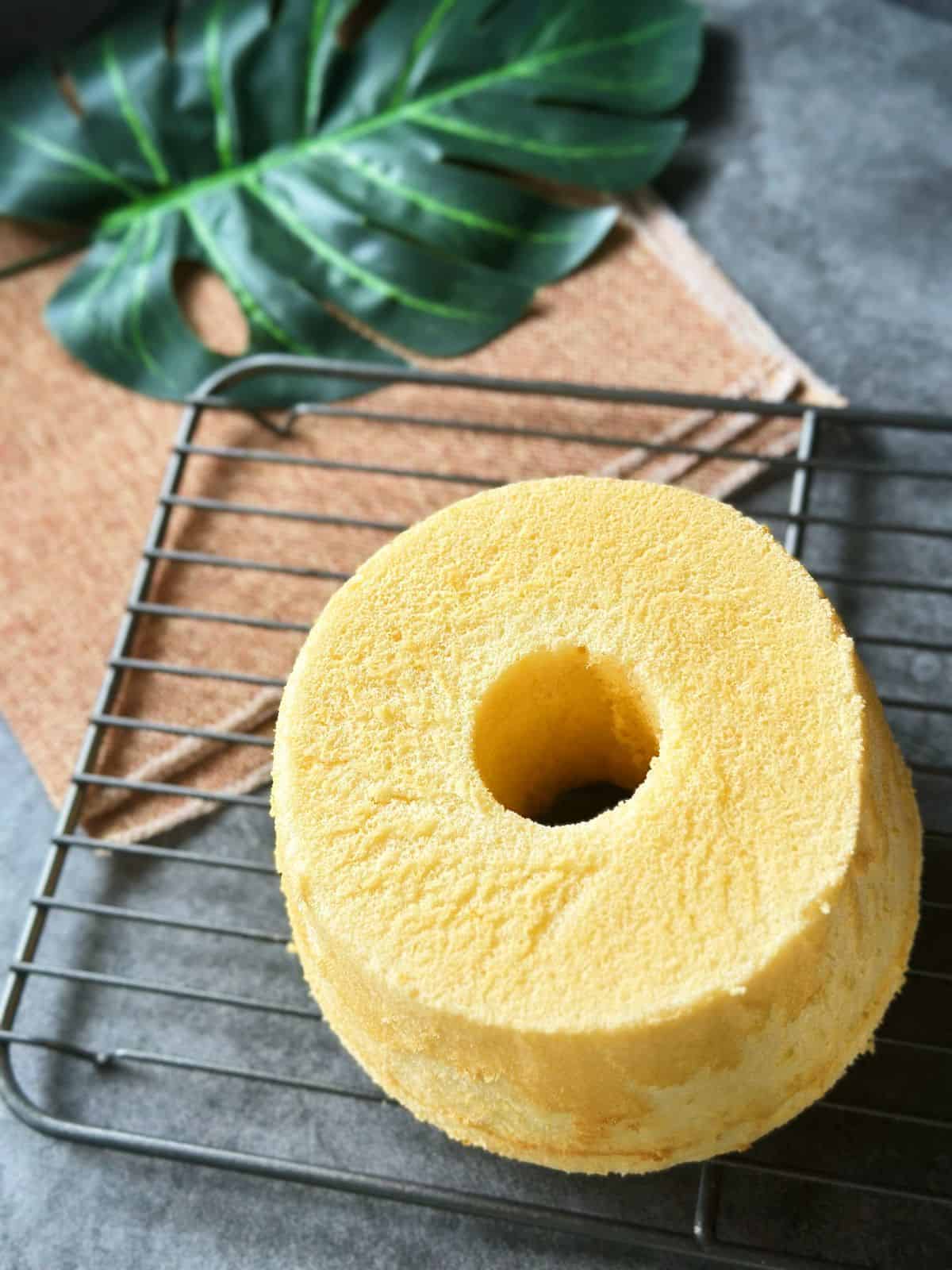
Totally different league compared to American cakes, which are usually butter-heavy, rich, and often use baking powder or soda for that lift.
This one’s a classic Vanilla Chiffon—simple, soft, and satisfying. But if you’re in the mood to mix things up, I’ve got some fun variations on the blog too, like the ever-popular Pandan Chiffon from Southeast Asia or the dreamy, purple-hued Ube Chiffon that’s just as good as it looks.
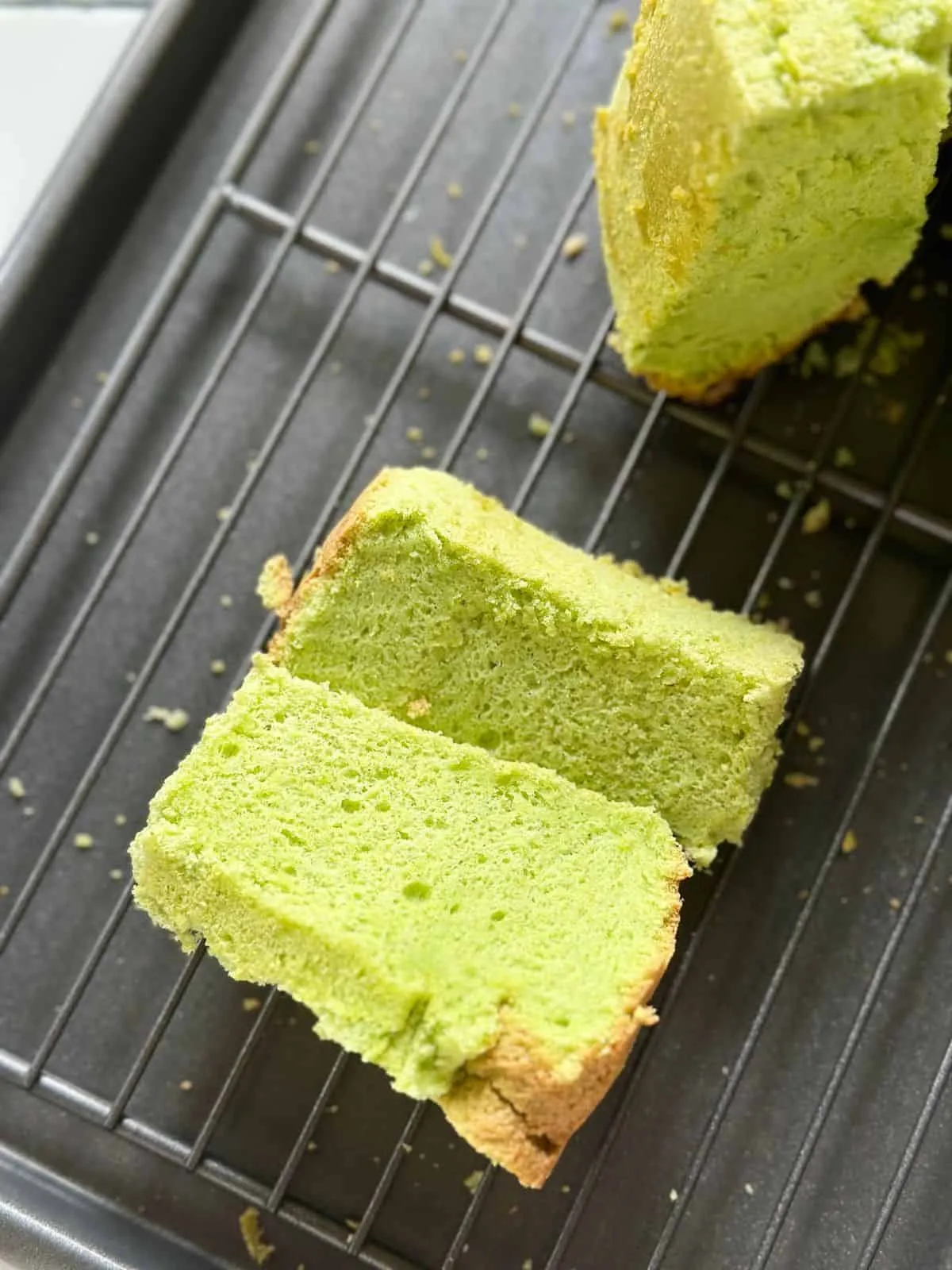

Sponge Cake Making Methods
Before we get to baking, let’s have a little heart-to-heart about eggs—because how you beat them really sets the tone for your sponge cake. There’s more than one way to get that airy, melt-in-your-mouth texture, and each technique brings its own personality to the table.
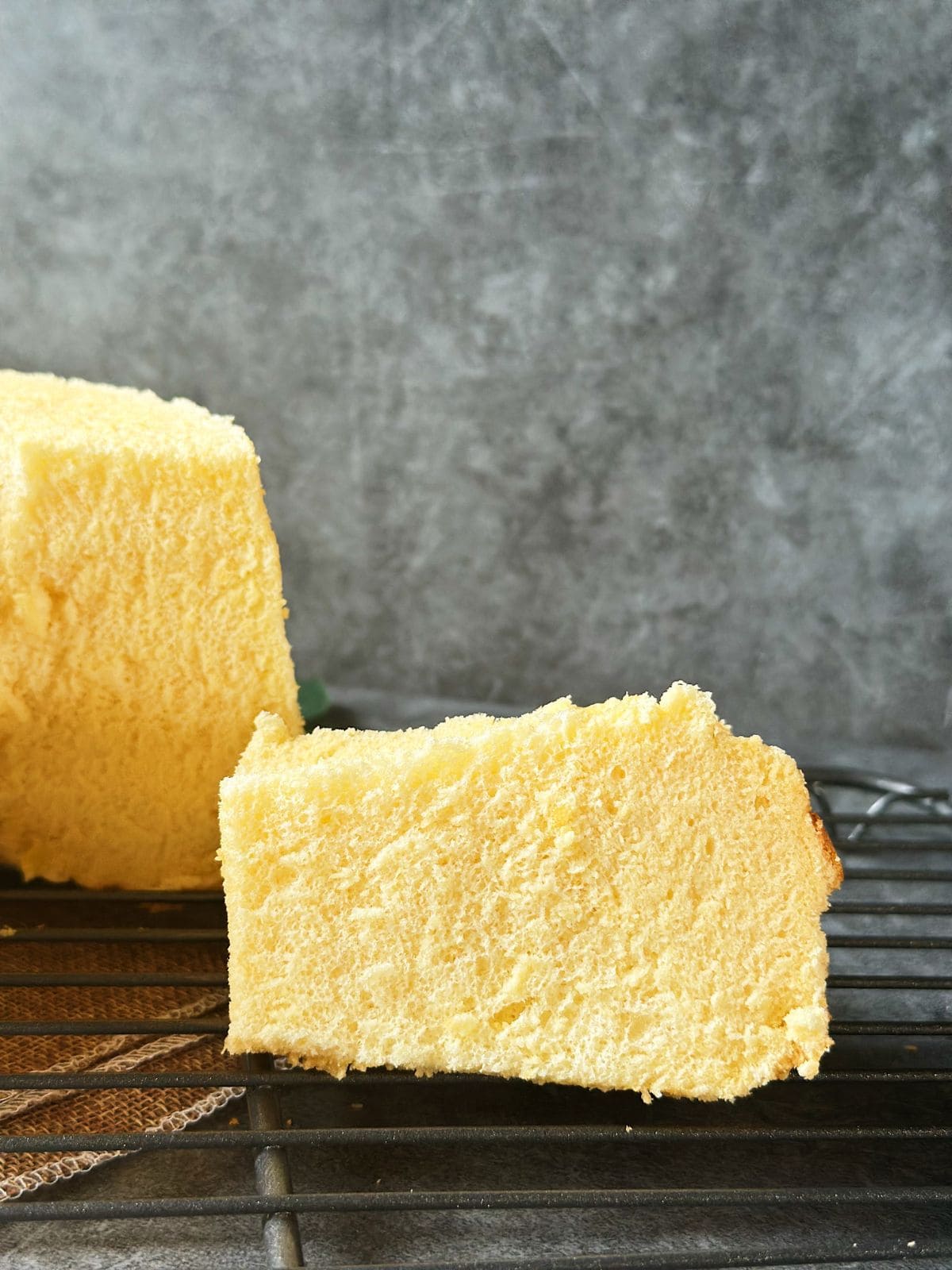
1. Whole Egg Method (aka the Sponge Method)
This one’s pretty classic. You whip whole eggs and sugar together until they’re pale, thick, and airy, then gently fold in the flour and fat (melted butter or oil). It gives you a light, slightly firmer sponge compared to chiffon.
🍰 Perfect for: European-style genoise, Japanese strawberry shortcake, Nagasaki Castella cake, hot milk sponge, and rolled cakes.
🥄 Texture: Light but with some bite—good for layering or shaping.
2. Separated Egg Method (aka Chiffon Style)
This is the go-to in most Asian-style cakes. You beat the egg whites into a glossy meringue, then fold them into the yolk mixture. It takes a little care, but the payoff? Incredibly soft, airy, and cloud-like cakes.
🍰 Perfect for: Chiffon cake (obviously), Chinese Swiss rolls, Chinese fruit sponge cake, Chinese paper-wrapped sponge cake, Japanese cotton cheesecake, Hokkaido cupcakes, angel food cake.
🥄 Texture: Soft-as-a-cloud. My mom’s favorite.
3. Tangmian Method (Scalded Flour Method)
This is the “pro level” version of the chiffon technique. You heat up oil or milk and mix it with flour to weaken the gluten before adding it to the batter. It gives you a finer, more delicate crumb and a super tender bite.
🍰 Perfect for: Taiwanese castella, ultra-soft chiffon, and fancy Chinese Swiss rolls.
🥄 Texture: Ultra-soft, silky, like eating a warm hug.
4. Hybrid Method (Vietnamese Style)
This one’s a bit of a blend. You start by whipping the egg whites to stiff peaks, then slowly mix in the yolks, followed by flour, oil, and milk. It’s the go-to method for making Bánh Bông Lan in Vietnam—simple, reliable, and no fancy steps involved.
Think of those soft, golden mini sponge cakes your auntie used to bring home in a paper box from the market. Yep, that’s the one.
🍰 Perfect for: Bánh Bông Lan Trứng Muối (sponge cake topped with salted egg and meat floss) or rice cooker sponge cakes.
🥄 Texture: Fluffy but with a bit more structure—easy to snack on by the handful (ask me how I know).
Ingredients & Tools You’ll Need
Egg Yolk Mixture
- Egg yolks
- Cooking oil – Use a neutral oil like corn or canola. Olive oil is a bit too strong for this gentle cake.
- Milk
- All-purpose flour – Low-gluten flour like cake flour gives a softer crumb, but all-purpose works just fine too.
- Cornstarch – Helps reduce gluten for a more tender texture. You can skip it and use all flour, but the cake will be a bit firmer.
- Vanilla extract – For that cozy aroma.
Egg White Mixture
- Egg whites – Carefully separate them from the yolks. Make sure your bowl is squeaky clean—no grease or water, or the whites won’t whip properly.
- Granulated sugar
- Cream of tartar – Helps stabilize the meringue. If you don’t have it, a splash of vinegar or lemon/lime juice will do, but cream of tartar works best.
- Salt – Just a tiny pinch to balance the flavor.
Tools
- Chiffon mold – This is key. Look for the kind with tall, straight sides and a center tube. It should NOT be nonstick and made of aluminum for even heat distribution—it helps the cake rise evenly and stay light as a cloud. (P.S. Not the same as a bundt pan!)
- Kitchen scale – Chiffon cakes can be a little picky. Measuring by weight makes a big difference—I highly recommend using a scale for best results.
Instructions
Step 1: Make the egg yolk batter
- Whisk egg yolks with oil just until combined.
- Add milk and vanilla, whisk again briefly.
- Sift in flour and cornstarch, then gently mix until smooth.
Tip: Stick to this order and avoid overmixing.
Step 2: Whip the meringue
- Add salt and cream of tartar to egg whites.
- Beat on low until foamy, then gradually add sugar in 3–4 parts while increasing speed.
- Whip until firm peaks form—glossy and hold their shape with a slight curl.
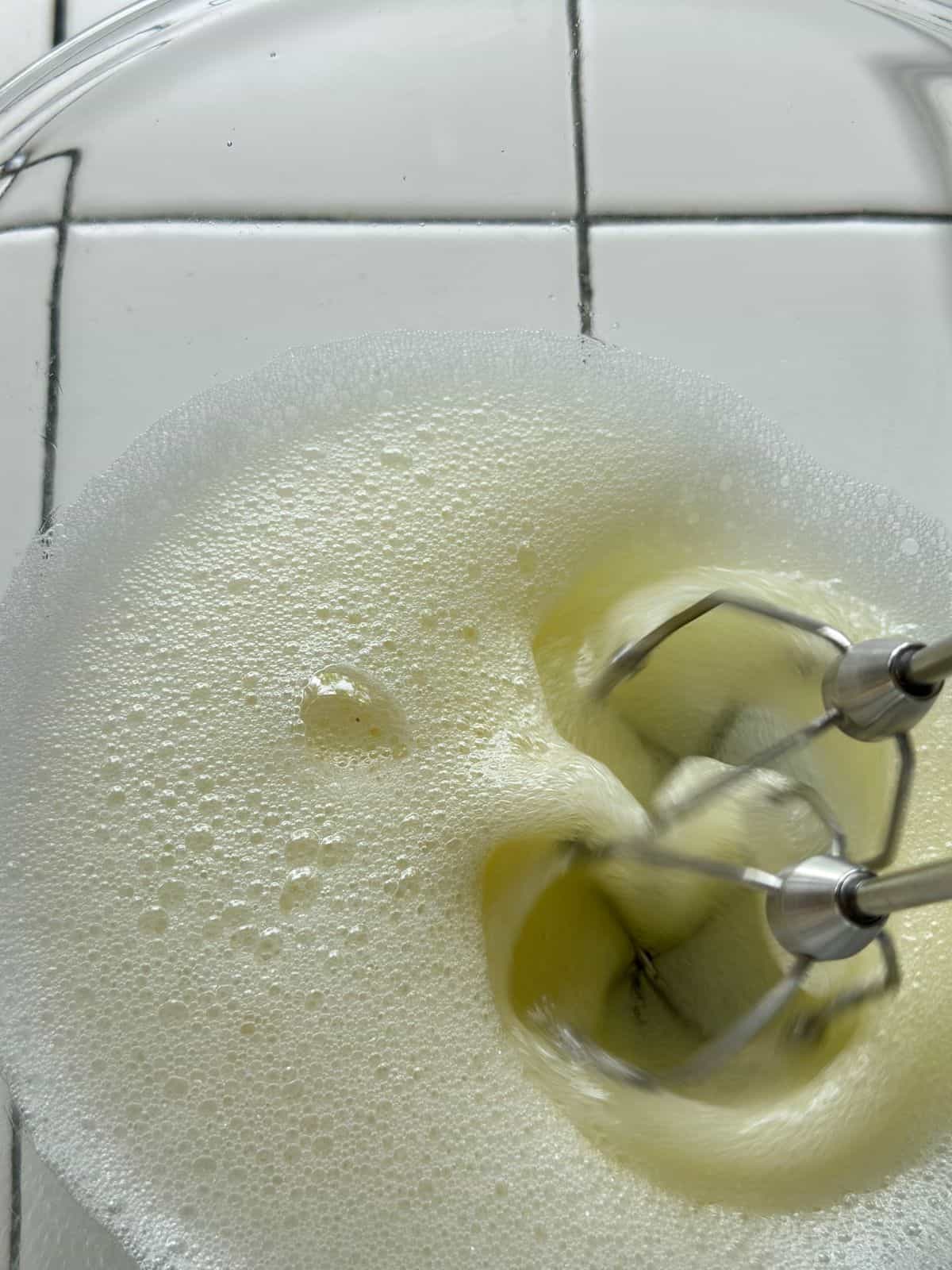
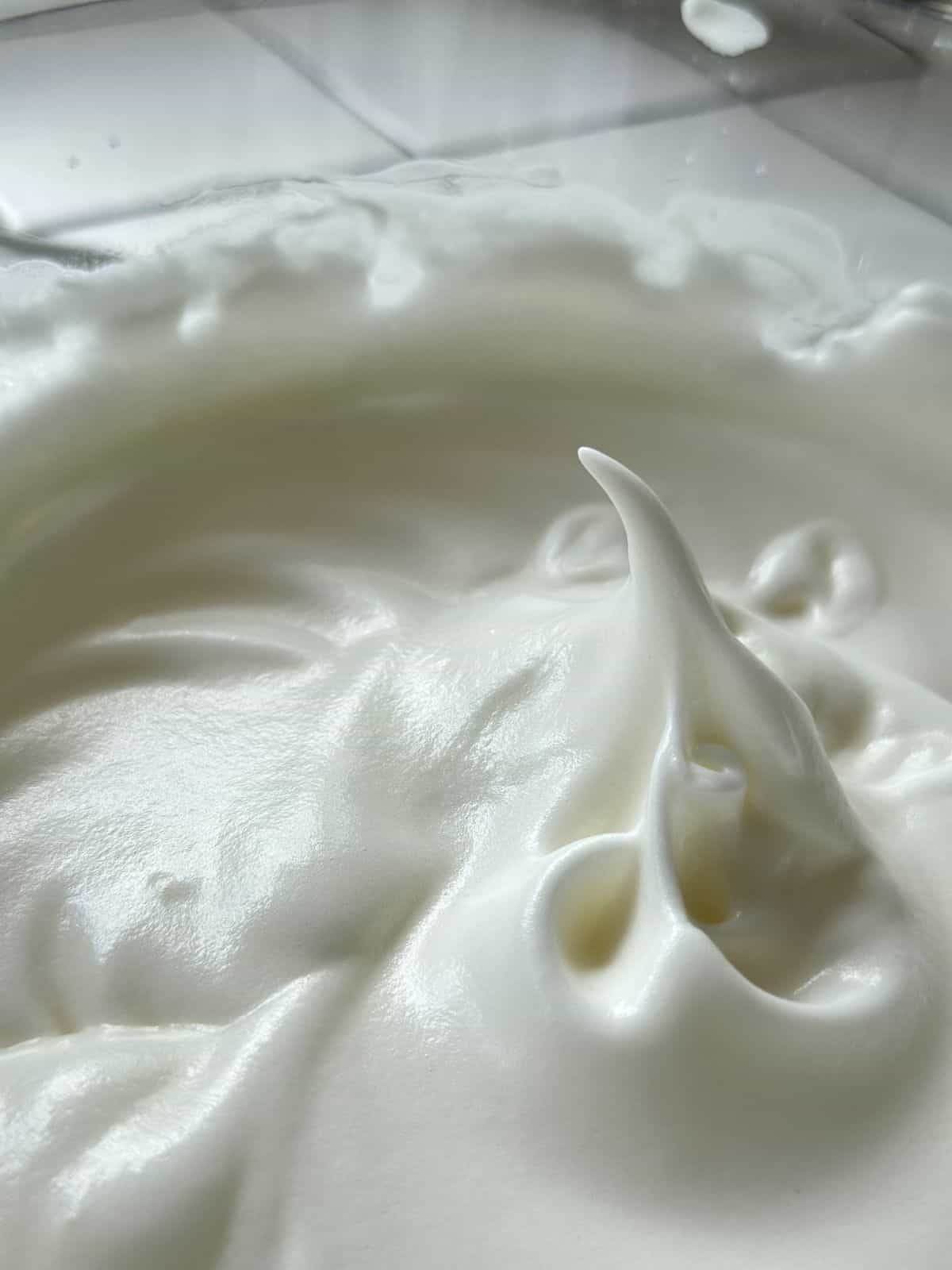
Step 3: Fold the batter
- Add a bit of meringue to the yolk batter to lighten it. Mix until smooth.
- Add the rest and fold gently using a spatula (or whisk), slicing and turning while rotating the bowl.
- Scrape the bottom and sides to combine thoroughly.
Avoid overmixing to keep the batter airy.
Step 4: Pour and bake
- Preheat oven to 300–330°F (150–165°C) for at least 20 minutes.
- Pour batter into an unlined, ungreased chiffon pan.
- Tap the pan a few times to pop large air bubbles.
- Bake for 40–50 minutes in the center of the oven.
If browning too quickly, cover with foil after 20–25 minutes.
Step 5: Cool & Serve
- Remove from oven and tap the pan gently.
- Flip the pan upside down and let the cake cool completely.
- Once cool, run a thin knife around the edges to release.
- Serve plain or with whipped cream and fresh fruits for a lovely treat!
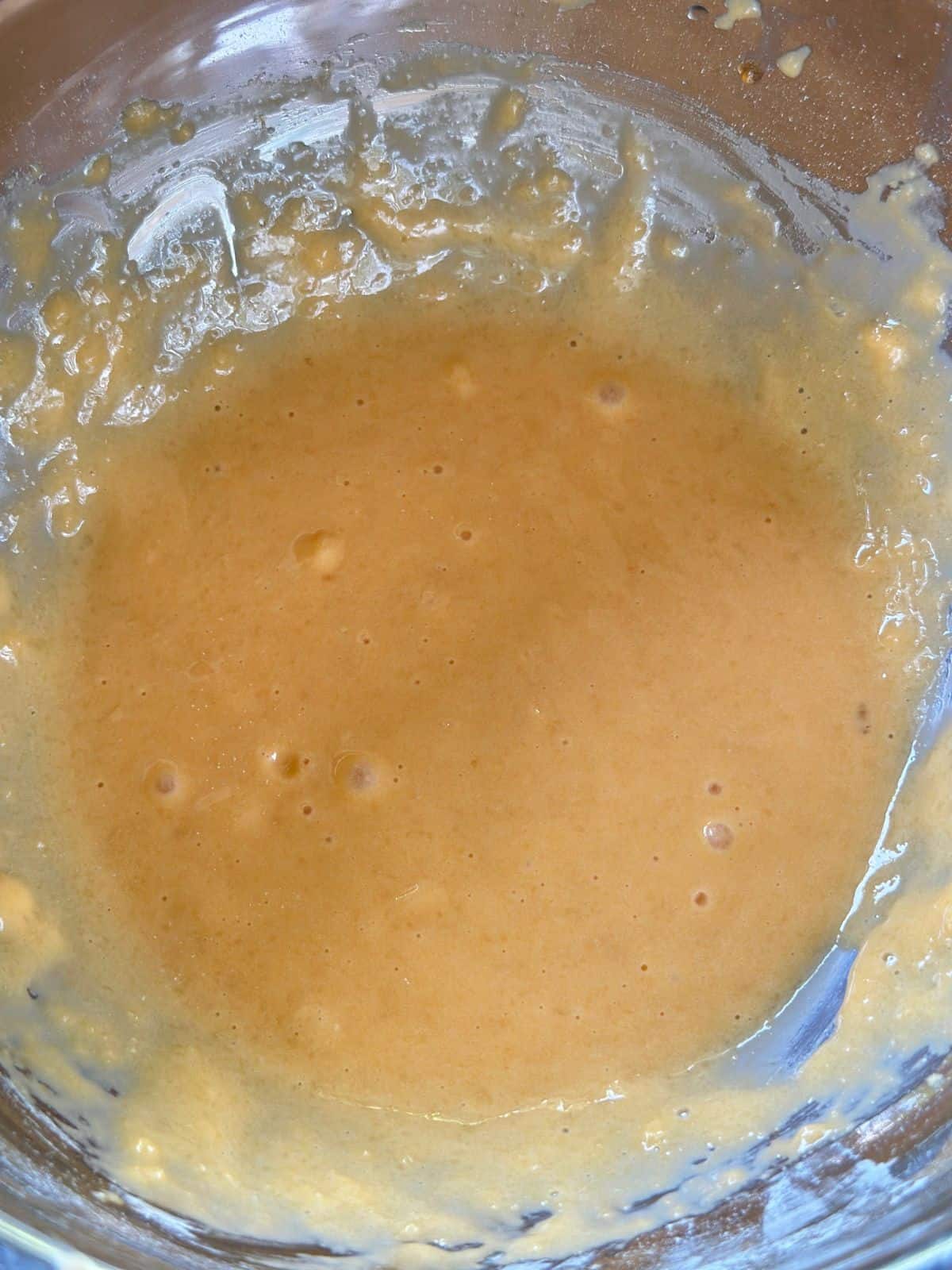
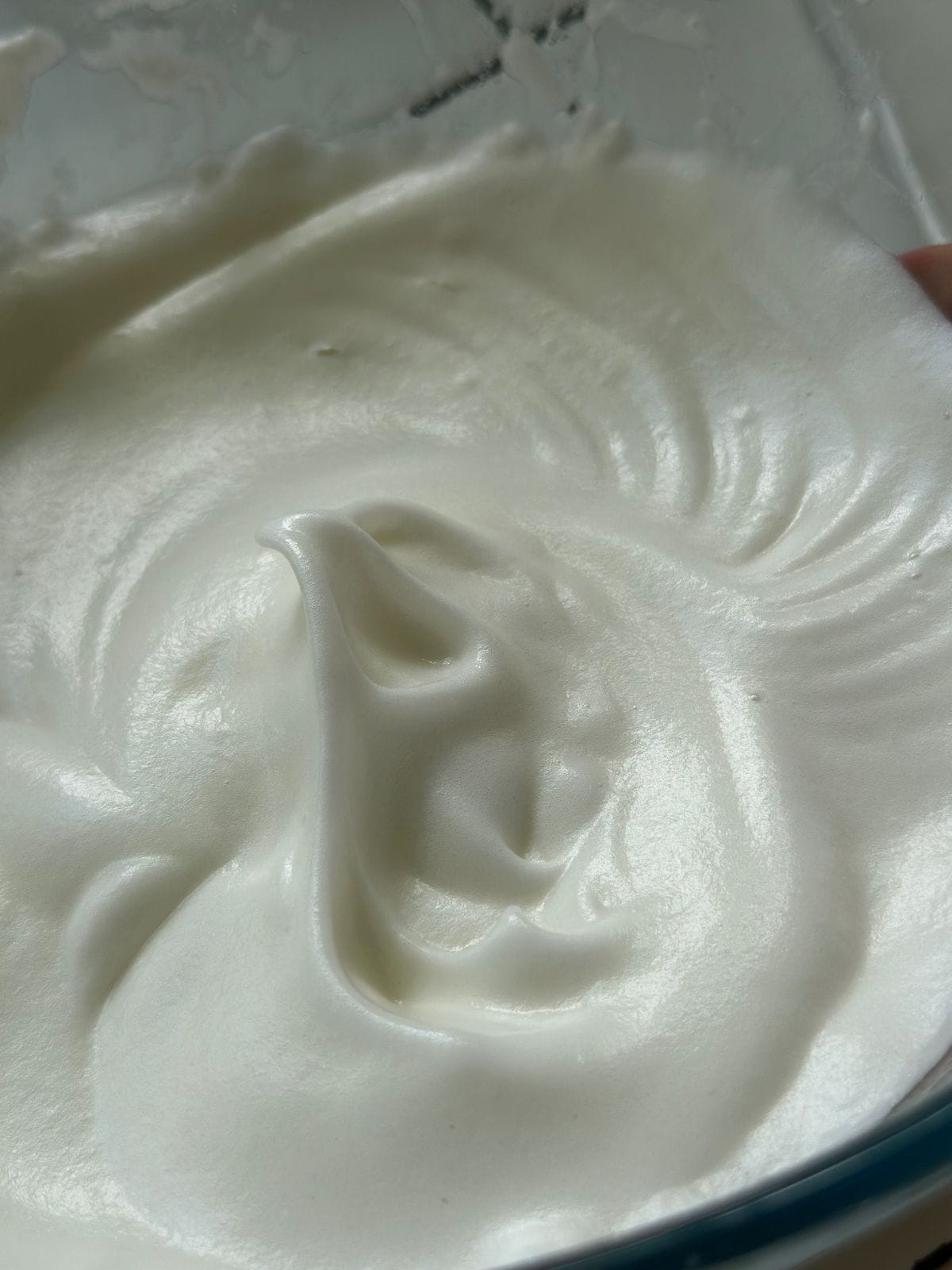
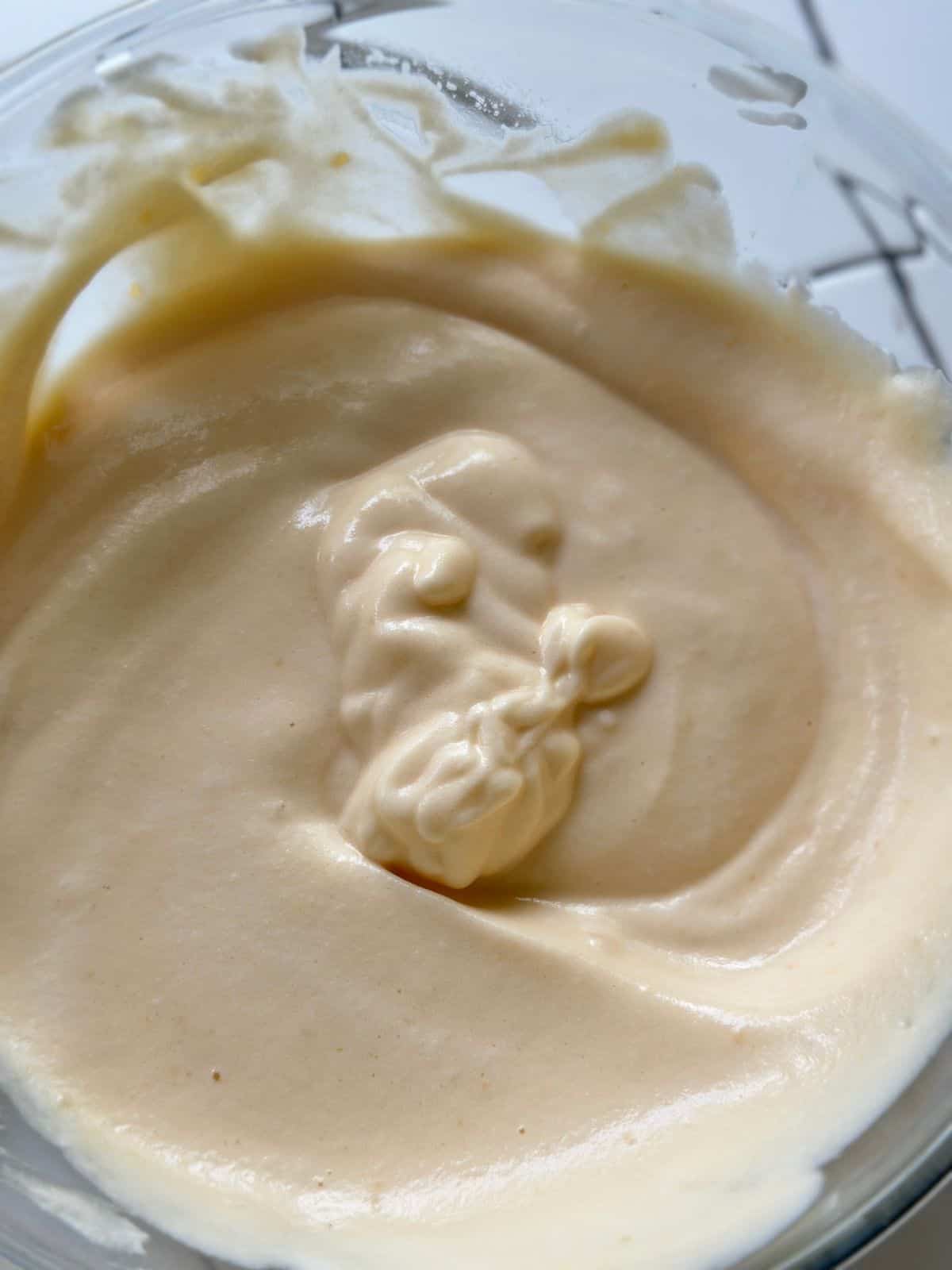
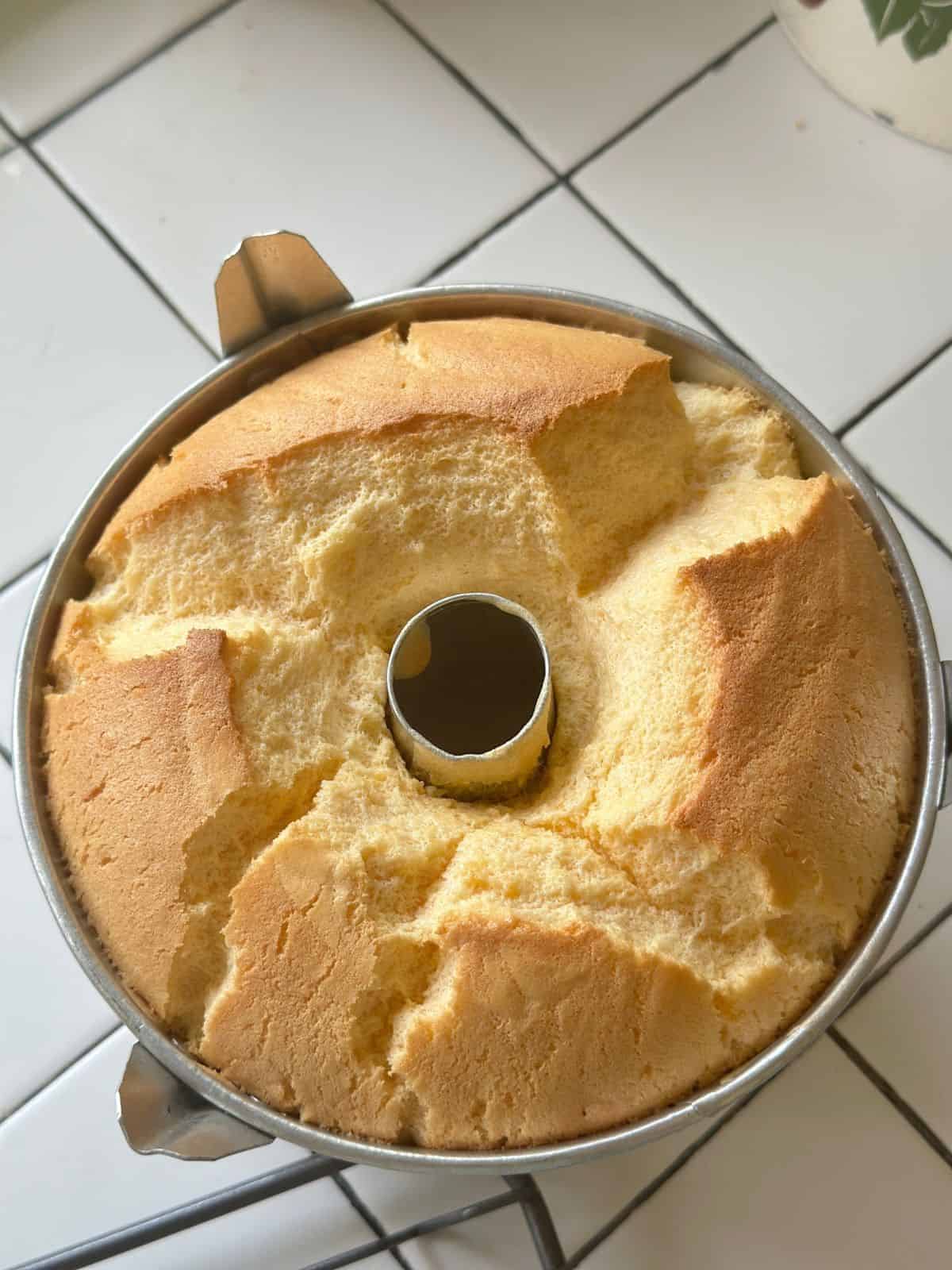
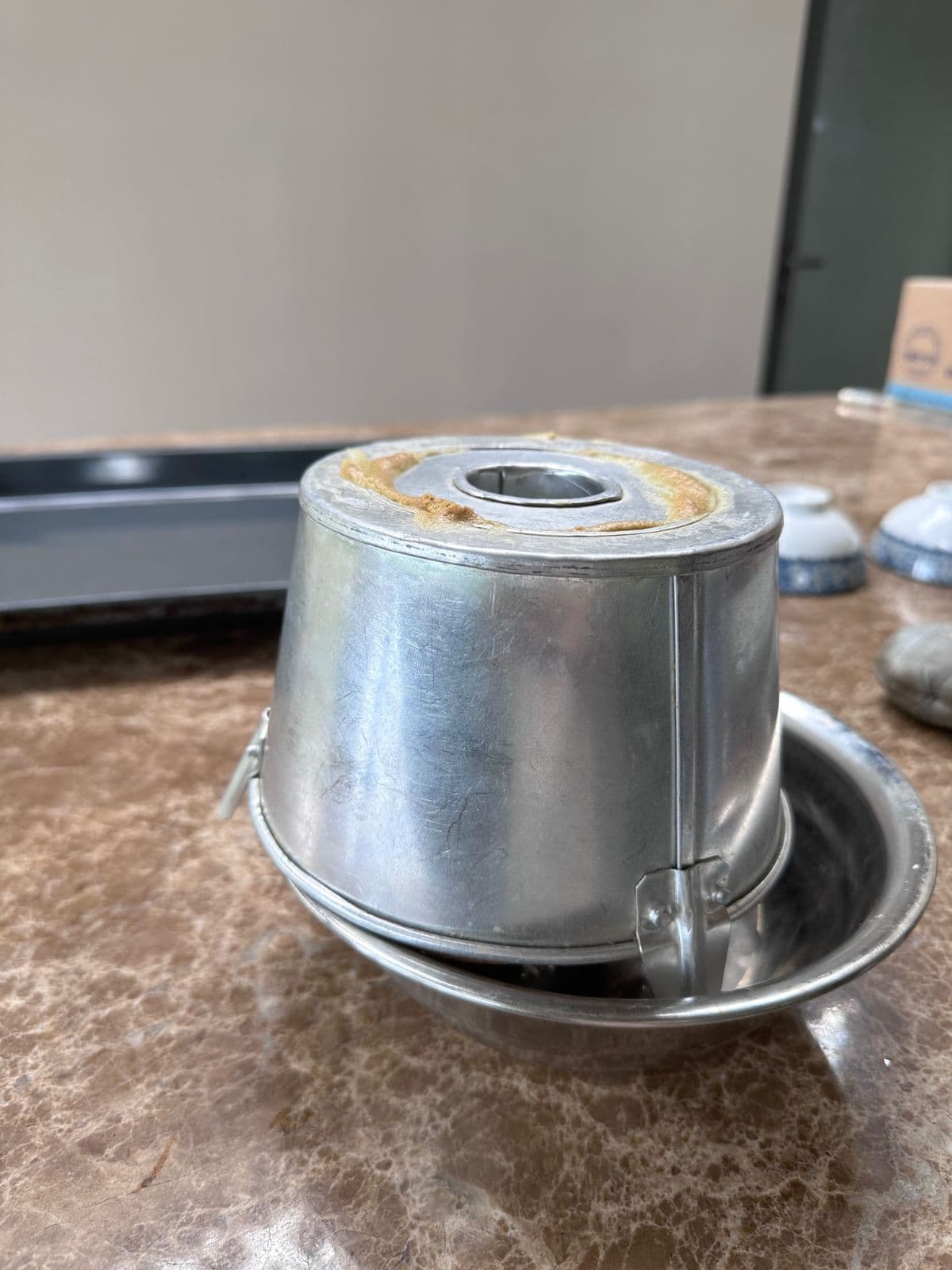
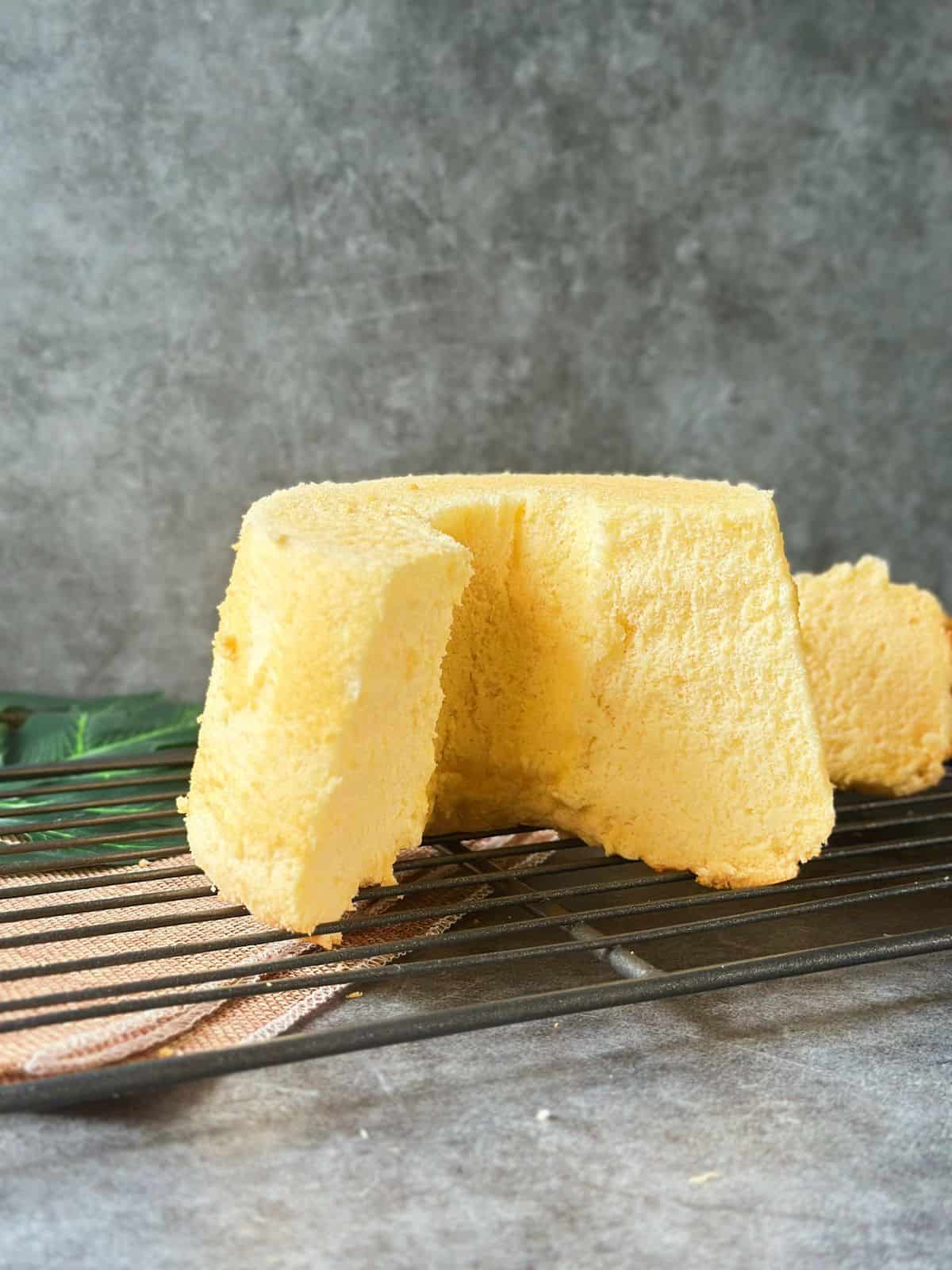
Expert Tips
Clean your tools well – Any trace of fat, like oil or butter, can stop your egg whites from whipping. Wipe bowls and beaters with vinegar or lemon juice if needed.
Start slow, then build speed – Begin whipping on medium-low and gradually increase. This helps create a stable meringue with fine, tight bubbles.
Aim for firm peaks – Not soft, not stiff—firm peaks are glossy, hold their shape, and gently curl at the tip when you lift the whisk.
Fold with care – Use a spatula or balloon whisk to fold in a slicing motion. Rotate the bowl as you go, and avoid stirring to keep the batter airy.
Use an ungreased aluminum chiffon pan – Skip the nonstick. Chiffon cake needs to grip the pan’s surface to rise tall and stay fluffy.
Substitute – You can swap cornstarch with tapioca starch, potato starch, or even all flour—just note that using only flour may yield a slightly firmer cake.
Even More Treats from the Asian Bakery!
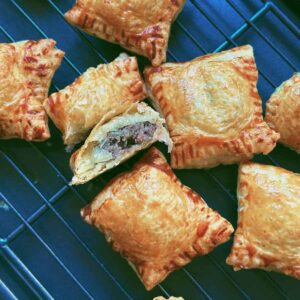
(Vietnamese Meat Pie)
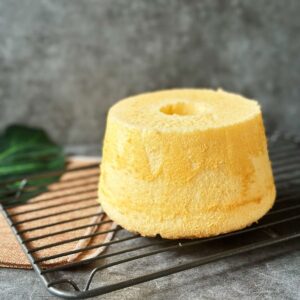
Chinese Chiffon Cake (Ultra Soft & Fluffy)
Equipment
- 1 chiffon pan
- 1 kitchen scale
Ingredients
Egg Yolk Mixture
- 4 egg yolks (size L)
- 40 g neutral cooking oil (e.g. corn, canola or sunflower)
- 40 g milk
- 50 g low-gluten flour or all-purpose flour
- 10 g cornstarch
- ½ tsp vanilla extract
Egg White Mixture
- 4 egg whites (size L)
- ¼ tsp cream of tartar (or substitute with lemon/lime juice or vinegar)
- 65 g granulated sugar
- 1 pinch salt
Instructions
- Make Yolk Batter – Whisk yolks with oil, then add milk & vanilla and whisk briefly. Sift in flour & cornstarch, whisk until just smooth. Tip: Stick to this order & don’t overmix.
- Whip Meringue – Beat whites with salt & cream of tartar until foamy. Gradually add sugar in 3–4 parts, beating to firm, glossy peaks.
- Fold Batter – Mix a spoonful of meringue into yolk batter. Fold in the rest gently with a spatula (or a whisk), slicing & rotating until fully combined. Don’t overmix.
- Bake – Preheat oven to 300–330°F (150–165°C). Pour into ungreased chiffon pan, tap to release bubbles. Bake 40–50 min; cover if browning too fast.
- Cool – Remove, tap pan lightly, then invert to cool completely. Once cool, run a knife around the edges to release.
- Serve – Enjoy plain or with whipped cream & fresh fruit.



